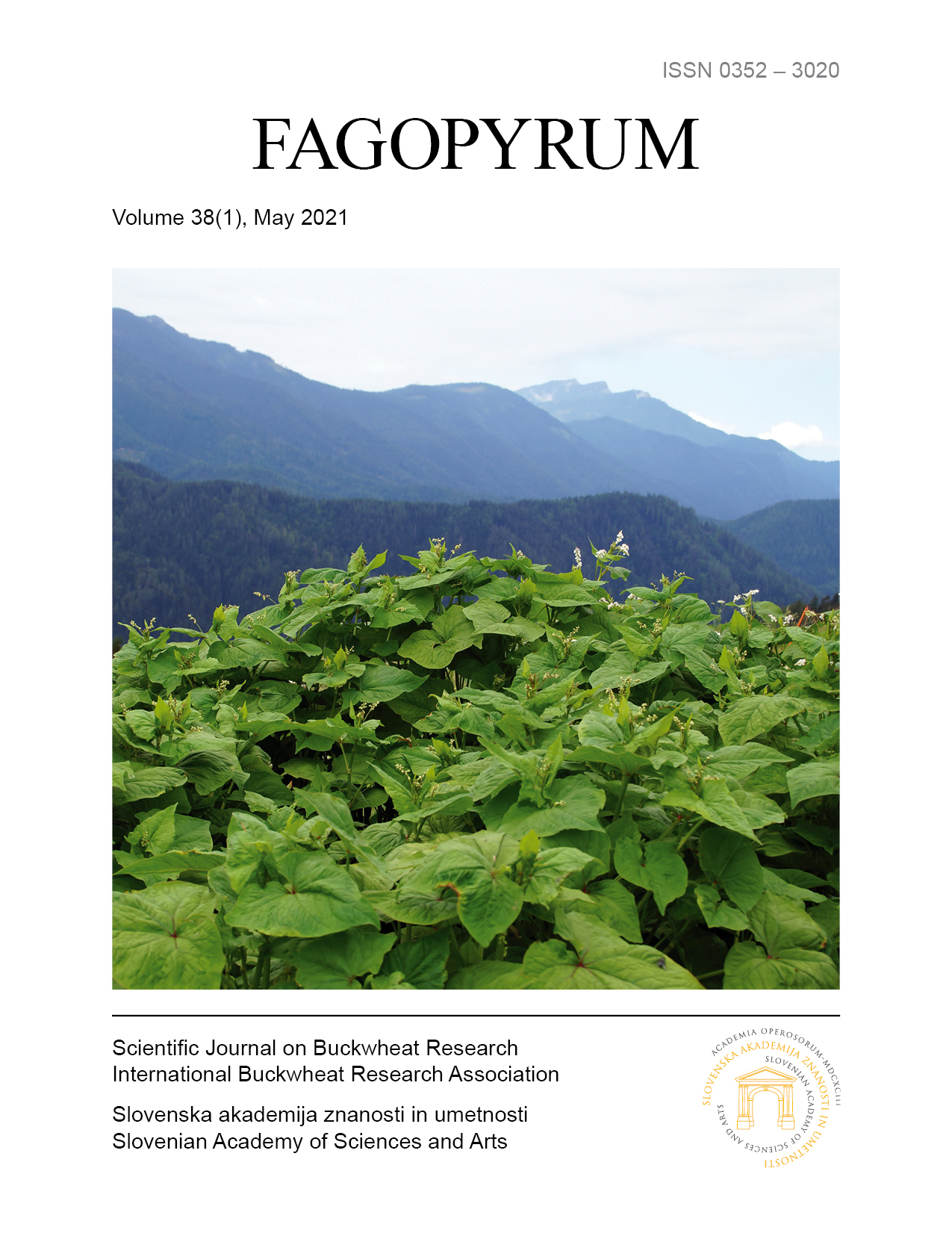Recent advances in the nutritional, functional, and agronomic traits of Tartary buckwheat (Fagopyrum tataricum (L.) Gaertn.)
DOI:
https://doi.org/10.3986/fag0018Abstract
Tartary buckwheat (Fagopyrum tataricum(L.) Gaertn.) is considered a functional food because its seeds contain higher amounts of polyphenols (e.g., rutin) compared to common buckwheat. However, because of its highly bitter taste and difficulties in cultivation, the agricultural production and usage of Tartary buckwheat in food products remain limited. The nutritional and functional ingredients of Tartary buckwheat include quercetin, which causes its bitterness and is generated by rutinosidase (rutin-degrading enzyme). A nonbitter Tartary buckwheat variety with trace levels of rutinosidase has recently been developed. Despite such research, there is still a lack of agronomic information on Tartary buckwheat. Lodging can be a significant problem during its cultivation, and a lodging-resistant, semidwarf variety has been developed. This paper summarizes recent advances in our knowledge regarding the nutritional and agronomic traits of Tartary buckwheat. The information extends our understanding of the health benefits of Tartary buckwheat and the solutions to challenges in its agricultural production.
Keywords: agronomic traits, nutrient function, Tartary buckwheat

